Maintaining optimal lung health is essential for overall well-being. Our lungs are constantly exposed to pollutants, allergens, and other harmful substances, which can impede their function over time. While the idea of a quick fix for lung health might be appealing, there’s no single recipe guaranteed to “clean” your lungs in 3 days. Your lungs are constantly working to filter air, and they have natural mechanisms to expel irritants and mucus.
However, with the right approach, it’s possible to detoxify and rejuvenate your lungs. In this article, we’ll explore a comprehensive recipe to clear lungs in 3 days, incorporating dietary changes, hydration, exercise, breathing techniques, herbal remedies, and more.
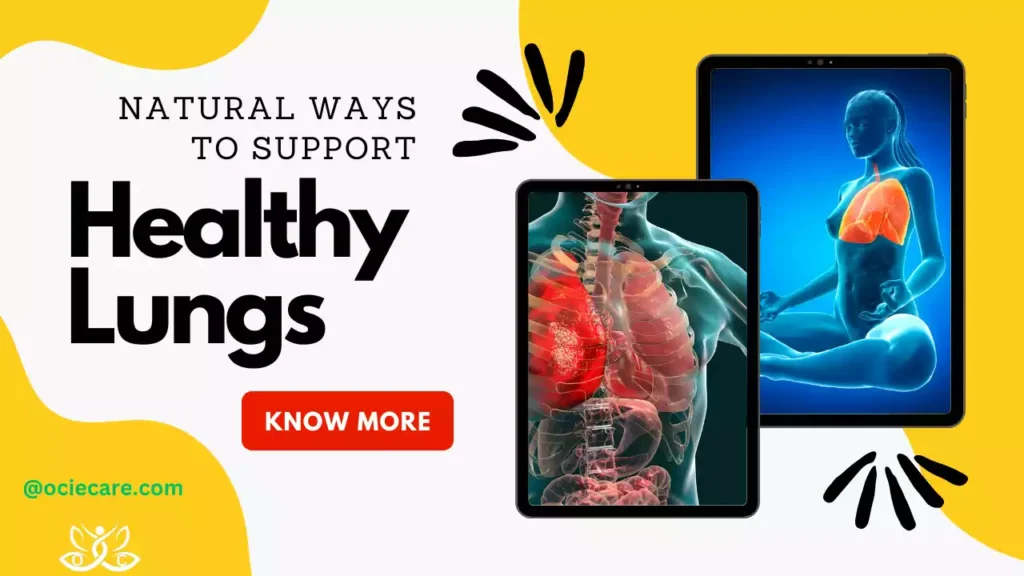
Why Your Lungs Matter: An Introduction to Lung Health
We often take breathing for granted, but our lungs are silently working heroes, keeping us alive and healthy. This session will explore the critical role of lung health in our overall well-being.
We’ll delve into:
- The amazing process of gas exchange in the lungs, supplying oxygen to every cell and removing waste carbon dioxide.
- How lung health impacts your energy levels, physical performance, and even your immune system.
- Factors that can threaten lung health, from smoking and pollution to certain diseases.
- Simple yet effective ways to keep your lungs strong and healthy throughout your life.
By understanding the importance of lung health, you can take proactive steps to breathe easier and live a healthier life.
Understanding Lung Health: What Affects It and Why It Matters
Our lungs are constantly working behind the scenes, taking in oxygen and releasing carbon dioxide with every breath. Maintaining healthy lungs is crucial for our overall health and well-being. Let’s explore the factors that can affect lung health and why keeping your lungs strong is so important.
Factors Affecting Lung Health:
Smoking:
- Smoking is the leading cause of preventable lung disease. The chemicals in cigarettes damage lung tissue, making it harder to breathe and increasing the risk of lung cancer, chronic obstructive pulmonary disease (COPD), and other respiratory illnesses.
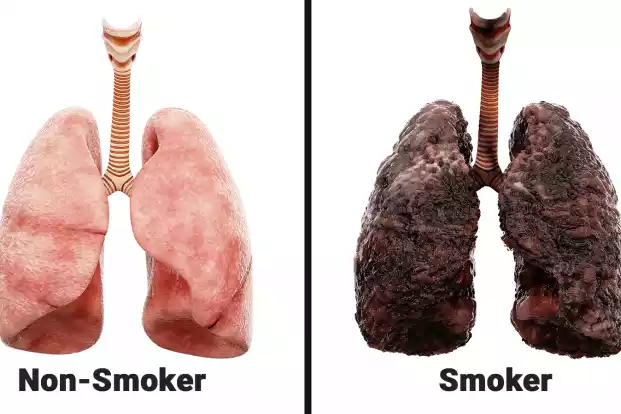
Air Pollution:
- Polluted air, both indoors and outdoors, can irritate the lungs and worsen respiratory problems. Pollutants like smog, dust, and secondhand smoke can inflame lung tissue and reduce lung function.

Occupational Hazards:
- Certain occupations expose workers to dust, fumes, and chemicals that can damage the lungs. Long-term exposure to these hazards can lead to occupational lung diseases such as asbestosis and black lung disease.
Infections:
- Respiratory infections, like pneumonia and bronchitis, can damage the lungs and make breathing difficult. While usually treatable, these infections can be serious, especially for people with underlying lung conditions.
Genetics:
- Some lung diseases, such as cystic fibrosis, have a genetic component. While genetics play a role, it doesn’t necessarily mean you’ll develop the disease, and there are often ways to manage it.
Importance of Maintaining Healthy Lungs:
Healthy lungs are essential for:
- Optimal Oxygen Supply: Your lungs deliver oxygen to your entire body, fueling your cells and keeping your organs functioning properly. Healthy lungs ensure efficient oxygen absorption, allowing you to feel energized and maintain good physical performance.
- Stronger Immune System: A healthy respiratory system helps fight off infections. Your lungs act as a first line of defense, filtering out harmful particles and pathogens that we breathe in.
- Improved Overall Health: Good lung health is linked to a better quality of life. It can improve your sleep, reduce your risk of chronic diseases, and enhance your overall well-being.
By taking steps to protect your lungs, you’re investing in your long-term health and vitality.
Recipe to Clear Lungs in 3 Days or 6 Steps
1. Dietary Changes for Lung Health: Breathe Easy with the Right Foods
What we put on our plates can significantly impact our lung health. Just like a car runs better on clean fuel, your lungs function more efficiently with the right nutrients. Let’s explore what foods to limit and which ones to embrace for optimal lung health.
Foods to Avoid:
Processed Meats:
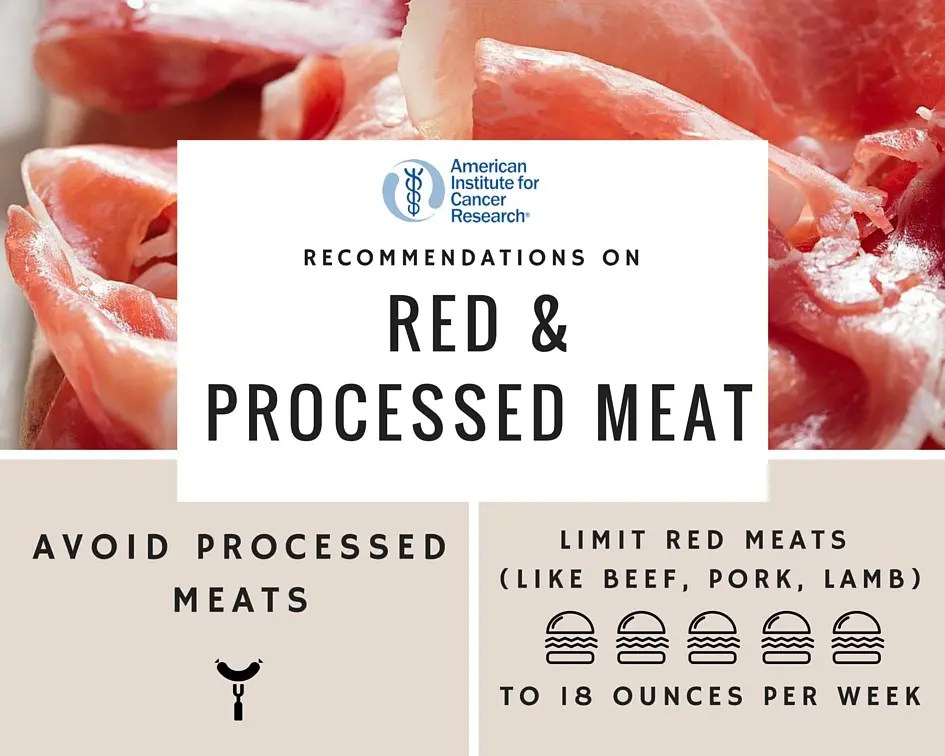
- Studies suggest processed meats, like bacon, hot dogs, and deli meats, may contribute to inflammation and worsen lung function . The nitrates and nitrites used in processing are believed to be culprits.
Salty Foods:
- Excessive salt intake can lead to fluid retention, which can cause shortness of breath, especially for people with existing lung conditions.
Dairy Products:
- While dairy offers essential nutrients, some people with lung diseases experience increased mucus production after consuming dairy. If you have this sensitivity, consider alternatives like lactose-free options or plant-based milks.
Sugary Drinks and Simple Carbs:
- Sugary drinks and refined carbohydrates like white bread and pastries can contribute to inflammation throughout the body, potentially impacting lung health.
Fried Foods:
- Fried foods are often high in unhealthy fats and can irritate the airways, making breathing more difficult.
Foods that Promote Lung Health:
Fruits and Vegetables:

- Fruits and vegetables are packed with antioxidants and vitamins that fight inflammation and protect your cells from damage. Aim for a rainbow of colors on your plate for a variety of beneficial nutrients .
Fatty Fish:

- Fatty fish like salmon, tuna, and sardines are rich in omega-3 fatty acids, which have anti-inflammatory properties and may help reduce airway inflammation .
Whole Grains:
- Whole grains provide sustained energy and fiber, which can help with weight management. Maintaining a healthy weight can reduce stress on your lungs. Choose options like brown rice, quinoa, and whole-wheat bread.
Cruciferous Vegetables:

- Broccoli, cauliflower, kale, and Brussels sprouts contain beneficial compounds that may help protect against lung cancer .
Foods Rich in Vitamin C:

- Vitamin C is a powerful antioxidant that supports the immune system and helps fight off infections that can affect the lungs. Citrus fruits, bell peppers, and leafy greens are all excellent sources of vitamin C .
By incorporating these dietary changes, you can create a lung-healthy eating pattern that will not only benefit your lungs but also contribute to your overall well-being.
2. Hydration: Keeping Your Lungs Moist and Healthy
Just like any other organ in your body, your lungs rely on proper hydration to function optimally. Drinking enough fluids helps thin mucus, prevents irritation, and keeps your airways functioning smoothly. Let’s delve into the importance of hydration for lung health and explore the best fluids to keep your lungs detoxified.
Importance of Hydration for Lung Health:
Thinner Mucus:
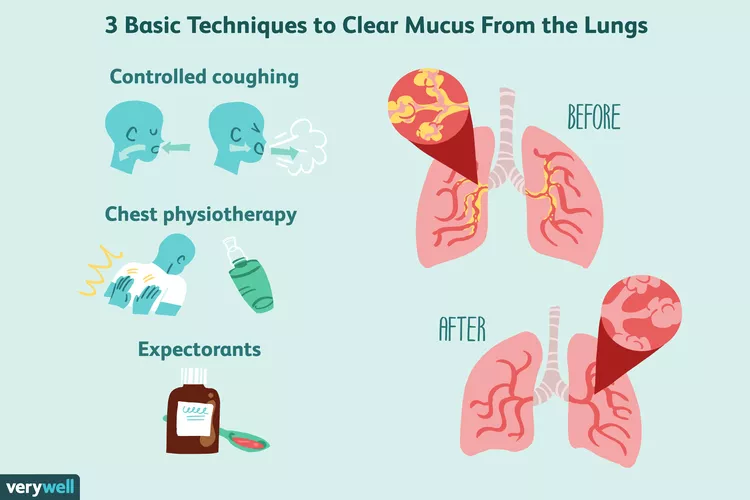
- Dehydration can thicken mucus in the lungs, making it harder to cough up irritants and pathogens. Proper hydration keeps mucus thin and easier to clear, reducing your risk of infections and respiratory problems.
Improved Airway Function:
- Dehydration can irritate and constrict the airways, making breathing more difficult. Staying hydrated keeps your airways lubricated and functioning properly, allowing for easier airflow.
Enhanced Oxygen Delivery:
- Water is a major component of blood, and proper hydration ensures optimal blood volume. This, in turn, facilitates efficient oxygen delivery throughout your body, including your lungs.
Recommended Fluids for Lung Detoxification:
Water:
- Water is the ultimate lung-cleansing beverage. It hydrates your body, thins mucus, and flushes out toxins. Aim for eight glasses of water per day, adjusting based on your activity level and climate.
Herbal Teas:
- Certain herbal teas, like ginger tea and peppermint tea, have soothing and anti-inflammatory properties that can benefit lung health. These teas can help loosen mucus and ease congestion.
Warm Lemon Water:
- Warm lemon water with a hint of honey can help clear mucus and soothe a sore throat. The vitamin C in lemons also supports your immune system.
Broth-Based Soups:
- Warm broths like vegetable broth or chicken broth can help loosen mucus and provide hydration. The steam from hot soup can also be soothing for irritated airways.
Limiting Dehydrating Drinks:
Alcohol:
- Alcohol is a diuretic, meaning it causes your body to lose fluids. Excessive alcohol consumption can dehydrate you and worsen lung function.
Caffeinated Beverages:
- While coffee and tea can provide hydration, they also have a mild diuretic effect. Limit your intake of caffeinated beverages and ensure you’re drinking enough water throughout the day.
Sugary Drinks:
- Sugary drinks like soda and sugary juices are high in calories and can contribute to inflammation. Opt for water or unsweetened beverages to stay hydrated and support lung health.
By staying hydrated and consuming lung-cleansing fluids, you can help your lungs function optimally and promote overall respiratory health.
3. Incorporating Exercise: Breathe Easier with Movement
Regular exercise isn’t just good for your heart and muscles; it’s a powerful tool for keeping your lungs healthy too. Physical activity strengthens your respiratory system, improves oxygen intake, and helps clear toxins from your lungs. Let’s explore the benefits of exercise for lung health and discover some lung-cleansing exercises you can incorporate into your routine.
Benefits of Exercise for Lung Health:
Increased Lung Capacity:
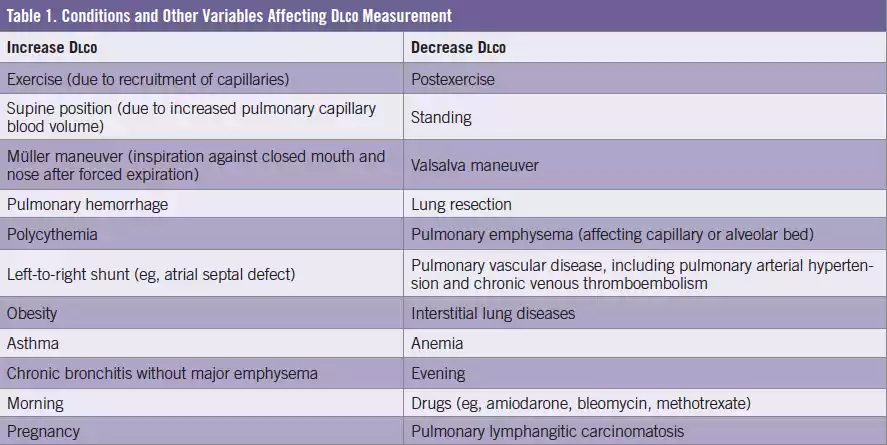
- Exercise strengthens the muscles that help you breathe, including the diaphragm and intercostal muscles. This allows your lungs to expand more fully, increasing your lung capacity and improving your ability to take in oxygen.
Improved Oxygen Delivery:
- Exercise strengthens your heart, which pumps blood more efficiently. This enhanced circulation delivers more oxygen-rich blood throughout your body, including your lungs.
Reduced Inflammation:
- Regular physical activity can help reduce inflammation in the airways, which can improve lung function and ease symptoms of respiratory conditions like asthma.
Boosted Immune System:
- Exercise helps strengthen your immune system, making you less susceptible to respiratory infections that can compromise lung health.
Mucus Clearance:
- Physical activity helps loosen mucus and expel it from the lungs, reducing congestion and improving airflow.
Types of Exercises Beneficial for Lung Detoxification:
Aerobic Exercise:

- Aim for at least 150 minutes of moderate-intensity aerobic exercise, or 75 minutes of vigorous-intensity exercise, per week. Activities like brisk walking, swimming, cycling, and dancing are all excellent choices.
Strength Training:

- Building strong muscles throughout your body, including your core and upper body, can improve your breathing efficiency and support your lungs.
Remember, it’s important to listen to your body and gradually increase the intensity and duration of your workouts. If you have any underlying health conditions, consult your doctor before starting a new exercise program.
By incorporating regular exercise into your routine, you can strengthen your lungs, improve your breathing, and promote overall respiratory health.
4. Breathing Techniques: Breathe Deep, Breathe Easy
Taking a deep breath can do wonders for your body and mind. But did you know that specific breathing techniques can also benefit your lung health? Let’s explore deep breathing exercises and yoga poses that can improve lung function and promote respiratory health.
Deep Breathing Exercises
Pursed-Lip Breathing:

This simple technique is a great way to slow your breathing rate and improve oxygen intake. Here’s how to do it:
- Sit comfortably with your shoulders relaxed.
- Inhale slowly through your nose for a count of 2 seconds.
- Purse your lips as if you’re about to blow out a candle.
- Exhale slowly through your pursed lips for a count of 4 seconds.
Diaphragmatic Breathing (Belly Breathing):
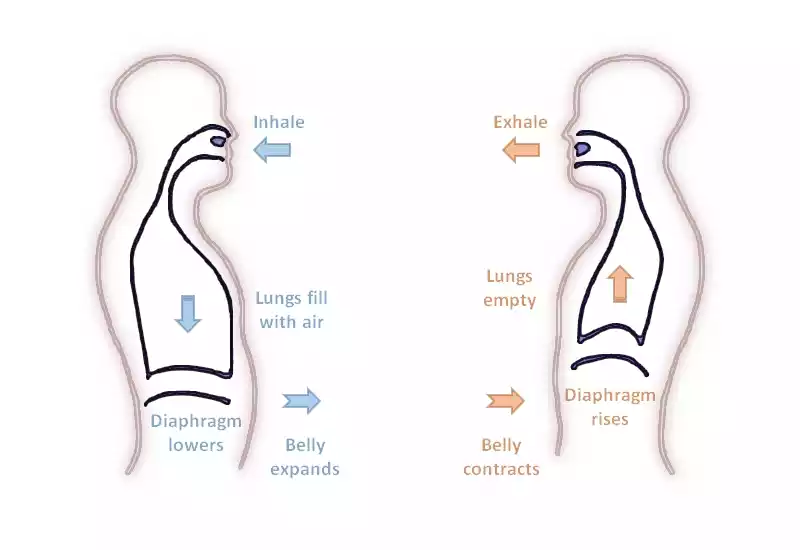
This technique engages your diaphragm, the main muscle of respiration, for deeper and more efficient breaths. Here’s how to practice:
- Lie down on your back with your knees bent and feet flat on the floor. Alternatively, you can sit comfortably with a straight back.
- Place one hand on your stomach and the other on your chest.
- Inhale slowly through your nose for a count of 3 seconds, feeling your stomach push outwards as your diaphragm contracts.
- Exhale slowly through pursed lips for a count of 6 seconds, feeling your stomach pull inwards as your diaphragm relaxes.
Yoga Poses for Improving Lung Function:
Yoga incorporates breathwork (pranayama) with physical postures (asanas) to promote overall well-being. Here are a few yoga poses that can benefit your lungs:
Child’s Pose (Balasana):

This gentle pose promotes relaxation and deep breathing.
- Kneel on the floor with your toes together and knees hip-width apart.
- Sit back on your heels and rest your torso between your thighs.
- Extend your arms forward with your palms facing down or rest them alongside your body.
- Breathe deeply and slowly, focusing on the expansion and contraction of your chest and abdomen.
Cat-Cow Pose (Marjaryasana-Bitilasana):

This dynamic pose helps mobilize your spine and improve lung capacity.
- Start on your hands and knees with your wrists shoulder-width apart and knees hip-width apart.
- As you inhale, arch your back, lifting your head and tailbone towards the ceiling (cow pose).
- As you exhale, round your back, tucking your chin to your chest and engaging your abdominal muscles (cat pose).
- Flow between these movements with your breath, inhaling on the arch and exhaling on the round.
Cobra Pose (Bhujangasana):
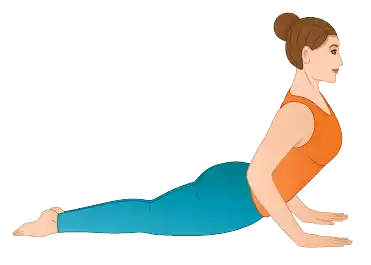
This pose helps open your chest and improve lung expansion.
- Lie down on your stomach with your toes together and your forehead on the floor.
- Place your palms flat on the floor beside your shoulders.
- Press into your palms to slowly lift your upper body off the floor, keeping your hips and legs on the ground.
- Arch your back slightly and gaze upwards. Breathe deeply and hold for a few breaths before slowly lowering yourself back down.
Remember, these are just a few examples. There are many other breathing exercises and yoga poses that can benefit your lungs. Consult with a qualified yoga instructor to learn proper technique and find poses that are suitable for your fitness level.
By incorporating these breathing techniques and yoga poses into your routine, you can improve your lung function, promote relaxation, and enhance your overall well-being.
5. Herbal Remedies: Breathe Easy with Natural Support
While there is no miracle cure for lung problems, certain herbs and supplements may offer some supportive benefits for lung health. It’s important to note that these should not be considered a replacement for conventional medical treatment. Always consult with your doctor before starting any new herbal remedies or supplements.
Herbal Teas and their Benefits:
Certain herbal teas possess properties that may soothe respiratory discomfort and support lung function. Here are a few examples:
Peppermint Tea:
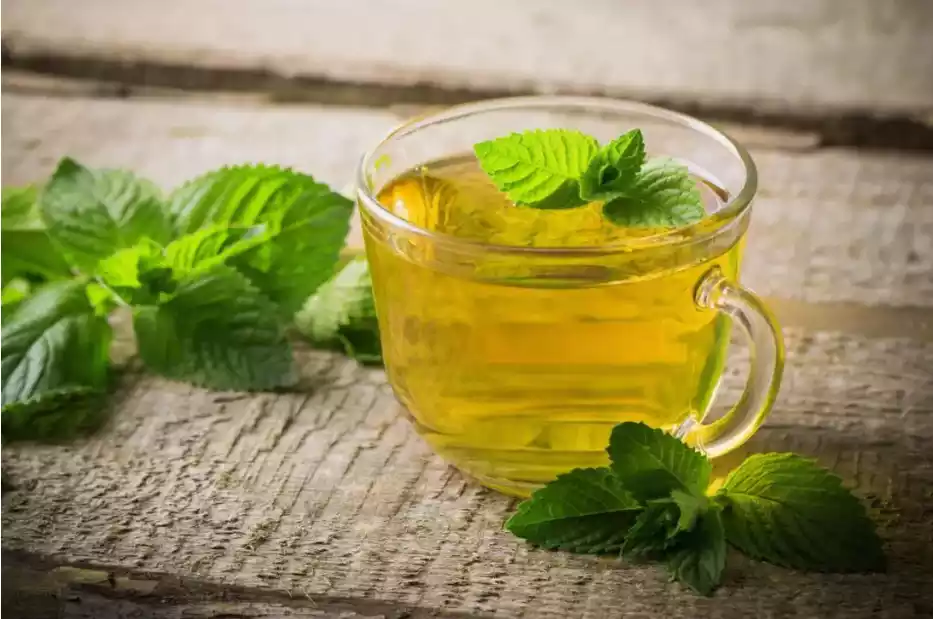
- Peppermint tea has a cooling and anti-inflammatory effect, which can help ease congestion and soothe a cough.
Eucalyptus Tea:

- Eucalyptus tea may help loosen mucus and ease congestion due to its decongestant properties. Use with caution: Eucalyptus oil is not for internal consumption and can be toxic if ingested. Inhale the steam or use a diluted eucalyptus solution for topical application only.
Thyme Tea:
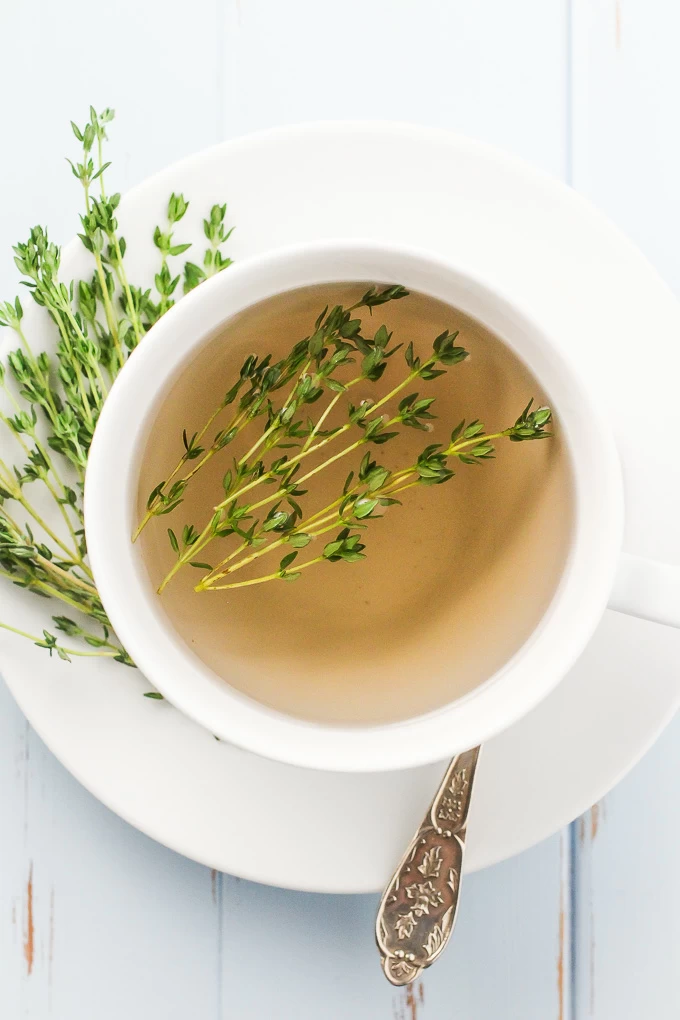
- Thyme tea has been traditionally used to help alleviate coughs and bronchitis. It may also possess some antimicrobial properties.
Licorice Root Tea:
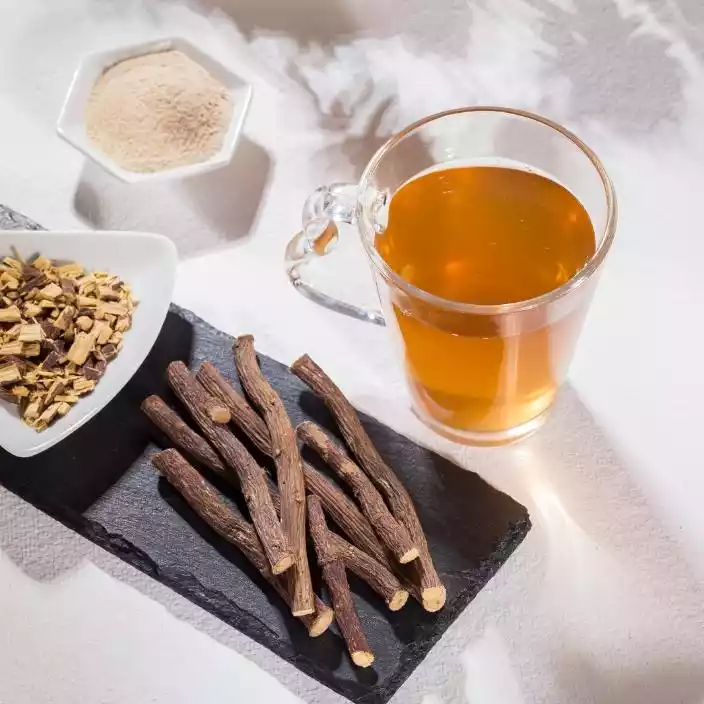
- Licorice root tea may help soothe a sore throat and ease coughing. However, excessive licorice consumption can be harmful, so consult with your doctor before using licorice root tea regularly.
While these herbal teas may offer some relief, more research is needed to confirm their long-term effectiveness for lung health.
Supplements for Lung Detoxification:
Some people explore supplements to support lung health. However, there is limited scientific evidence to support the use of any particular supplement for lung detoxification. Here are two commonly considered options:
N-acetylcysteine (NAC):
- NAC is an antioxidant that may help loosen mucus and reduce inflammation in the airways. However, research on the effectiveness of NAC for lung health is ongoing.
Vitamin C:
- Vitamin C is an antioxidant that supports the immune system and may help fight off respiratory infections. While not a direct lung detoxifier, sufficient vitamin C intake is crucial for overall health.
Supplements can interact with medications. Consult with your doctor before taking any new supplements, especially if you have any underlying health conditions.
6. Incorporating Steam Therapy: Breathe Easier with the Power of Steam
Steam therapy has been used for centuries to alleviate respiratory discomfort. Inhaling warm, moist air can help loosen mucus, soothe irritation, and promote easier breathing. Let’s explore the benefits of steam therapy for lung health and discover some safe and effective steam inhalation techniques.
Benefits of Steam for Lung Detoxification (Mucus Clearance):

- Steam inhalation helps loosen thick mucus in the airways, making it easier to cough up and expel irritants and pathogens. This can be especially beneficial for people suffering from coughs, colds, or congestion.
Soothes Irritation:
- The warm, moist air from steam can soothe irritated and inflamed tissues in the nasal passages and airways. This can provide relief from symptoms like a sore throat, dry cough, and nasal congestion.
Hydrates Mucus Membranes:
- Steam inhalation can help hydrate dry and irritated mucus membranes in the nose and throat. This can improve comfort and reduce discomfort associated with dryness.
While steam therapy can provide some relief, it’s not a cure for any underlying lung conditions. It’s important to consult with a doctor if you have persistent respiratory problems.
Steam Inhalation Techniques:
There are a few safe and effective ways to incorporate steam therapy into your routine:
Hot Shower/Bath:

- Simply taking a hot shower or bath can be a great way to benefit from steam therapy. The hot water vapor will fill the bathroom and allow you to inhale the moist air. Close the bathroom door to trap the steam and breathe deeply for 10-15 minutes.
Facial Steamer:
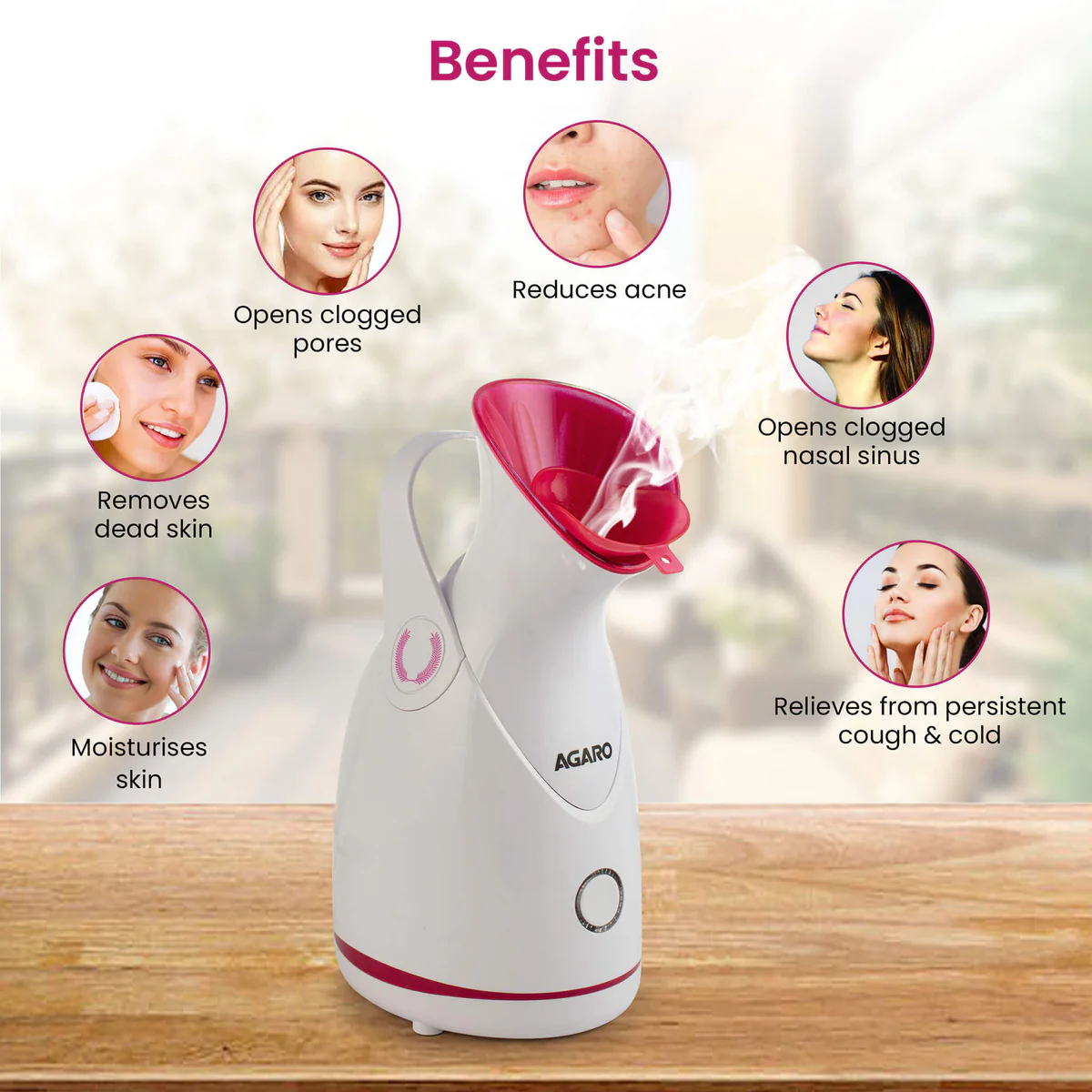
- A facial steamer is a small appliance that creates a steady stream of warm mist. Place your face comfortably in front of the steamer, keeping a safe distance to avoid burns, and inhale the steam for 10-15 minutes.
Bowl of Hot Water:
- Fill a large bowl with hot water. Drape a towel over your head and create a tent around the bowl. Lean forward carefully, keeping a safe distance from the hot water to avoid scalding, and inhale the steam for 10-15 minutes.
Safety Tips:
- Avoid Extremely Hot Water: Use hot, not boiling, water to avoid scalding.
- Keep a Safe Distance: Maintain a safe distance from the hot water source to prevent burns.
- Add Essential Oils (with Caution): While some people recommend adding a few drops of essential oils like eucalyptus or peppermint to the steam, be cautious. Inhale the steam cautiously and avoid direct contact with the oils, as they can irritate the eyes and mucous membranes. Not recommended for children or pregnant women.
- Discontinue if Uncomfortable: Stop steam inhalation if you experience any discomfort or dizziness.
- Consult Your Doctor: If you have any underlying health conditions, consult with your doctor before using steam therapy.
By incorporating steam therapy safely and effectively, you can experience relief from respiratory discomfort and promote easier breathing. Remember, steam therapy is a complementary approach and should not replace any medications or treatments prescribed by your doctor.
Conclusion
We’ve explored the fascinating world of your lungs, delving into their essential role in keeping you alive and well. From understanding the threats to lung health to discovering simple yet effective ways to strengthen your lungs, this journey has equipped you with valuable knowledge.
Remember, there’s no single recipe guaranteed to “clean” your lungs in 3 days, your lungs are your constant companions, working tirelessly behind the scenes. By incorporating the tips and strategies we’ve discussed, you can empower yourself to breathe easier, improve your overall health, and live a vibrant life.
Here’s a quick recap of the key takeaways:
- Protect your lungs: Avoid smoking and secondhand smoke, minimize exposure to air pollution, and be mindful of occupational hazards.
- Nourish your lungs: Choose a lung-healthy diet rich in fruits, vegetables, whole grains, and healthy fats. Stay hydrated to keep your airways functioning smoothly.
- Move your body: Regular exercise strengthens your respiratory system, improves oxygen intake, and helps clear toxins from your lungs.
- Breathe deeply: Incorporate deep breathing exercises and yoga poses to improve lung function and promote relaxation.
- Explore natural options: Certain herbal teas and steam therapy may offer some relief for respiratory discomfort. However, always consult with your doctor before starting any new remedies.
Taking charge of your lung health is an investment in your well-being. By making small, sustainable changes to your lifestyle, you can breathe easier, feel better, and pave the way for a healthier, happier you.
FAQs
Q. Can I clear my lungs in three days if I’ve been a smoker for years?
A. While three days may not be sufficient to reverse the damage caused by years of smoking, adopting healthy habits can still benefit your lungs and overall health in the long run.
Q. Are there any side effects to detoxifying my lungs?
A. Some individuals may experience temporary symptoms such as increased coughing or mucus production as the lungs clear out toxins. However, these symptoms typically subside as the detoxification process progresses.
Q. Can children and elderly individuals follow this lung detoxification plan?
A. It’s essential to consult with a healthcare professional before implementing any detoxification plan, especially for children, elderly individuals, or those with underlying health conditions.
Q. Are there any specific foods I should avoid during the lung detoxification process?
A. Avoid foods that are known to exacerbate inflammation or congestion, such as processed foods, dairy products, and sugary beverages. Focus on whole, nutrient-dense foods that support respiratory health.
Q. How often should I perform steam therapy to clear my lungs?
A. Steam therapy can be performed as needed to alleviate congestion and promote respiratory clearance. However, avoid overexposure to steam to prevent skin irritation or dehydration.
Become a Home Doctor | Learn Practical to be Self-Reliant In 2023

You’re welcome! I appreciate your willingness to engage further. If you have any specific questions or topics you’d like to delve into, feel free to share them. Whether it’s about recent developments in technology, intriguing scientific discoveries, captivating literature, or anything else on your mind, I’m here to provide insights and assistance. Simply let me know how I can help, and I’ll be happy to assist you further!
Thank you for your response! I’m grateful for your willingness to engage in discussions. If there’s anything specific you’d like to explore or if you have any questions, please feel free to share them. Whether it’s about emerging trends in technology, recent breakthroughs in science, intriguing literary analyses, or any other topic, I’m here to assist you. Just let me know how I can be of help, and I’ll do my best to provide valuable insights and information!
You’re very welcome! I’m glad to hear that you’re open to exploring various topics. If you have any specific questions or areas of interest you’d like to delve into, please feel free to share them. Whether it’s about the latest advancements in technology, recent scientific discoveries, thought-provoking literary works, or any other subject, I’m here to offer insights and assistance. Just let me know how I can help, and I’ll do my best to provide valuable information and engage in meaningful discussions!
You’re very welcome! I’m glad to hear that you’re open to exploring various topics. If you have any specific questions or areas of interest you’d like to delve into, please feel free to share them. Whether it’s about the latest advancements in technology, recent scientific discoveries, thought-provoking literary works, or any other subject, I’m here to offer insights and assistance. Just let me know how I can help, and I’ll do my best to provide valuable information and engage in meaningful discussions!
Thank you for your response! I appreciate your openness to exploring various topics. If you have any specific questions or areas of interest you’d like to discuss, please feel free to share them. Whether it’s about the latest advancements in technology, recent scientific discoveries, thought-provoking literary works, or any other subject, I’m here to offer insights and assistance. Just let me know how I can help, and I’ll do my best to provide valuable information and engage in meaningful discussions!